history reprints from VistaBooks
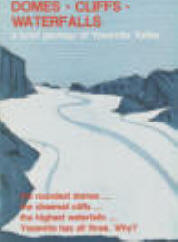
Domes, Cliffs, Waterfalls: a brief geology of Yosemite Valley.
by William R. Jones, former Chief Naturalist of Yosemite National Park.
Yosemite has the roundest domes, the sheerest cliffs, the highest waterfalls.
Why?
This book gives the answers from geology. Published by Yosemite Conservancy. Many photos and drawings, 21 pages. See sample pages, illustrations. Only a few copies left.
Order #: HEYD1858 paper$16.95.
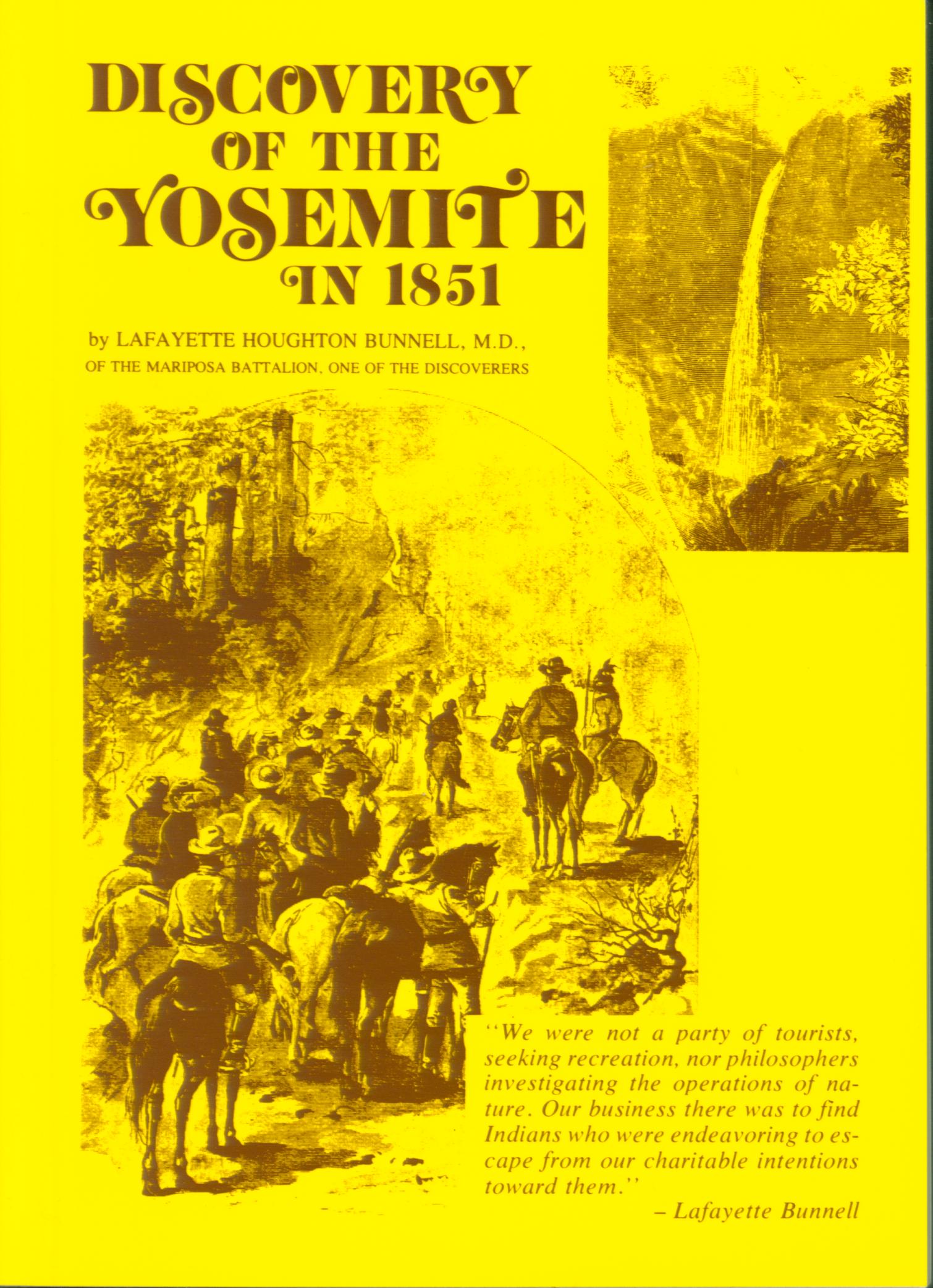
Discovery of the Yosemite in 1851--and the Indian war which led to that event.
by Lafayette Houghton Bunnell, M.D., one of the Discoverers, of the Mariposa Battalion. 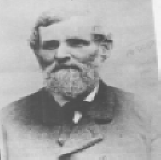
First published in 1880, this is the primary account of how Yosemite Valley came to be
"discovered" by the civilization that would displace its residents. Native Americans knew the valley was there, of course; they
were living in it when the battalion came to roust them out. Before the
Battalion's trip, the valley had been seen from
its rims and from afar by a few non-natives. But this event of 1851 was the first recorded entry and
exploration by a new people. Bunnell proposed the name of the Indian tribe for the valley, "as it was
suggestive, euphonious, and certainly American; that by so doing, the name of the tribe of
Indians which we met leaving their homes in this valley, perhaps never to return, would be
perpetuated."
Foreword by former chief park naturalist William R. Jones.
Period engravings. 184pages, slightly abridged from the original. See sample pages, illustrations.
ISBN-10: 0-89646-021-5. ISBN-13: 978-0-89646-021-8. Order #: VIST0021 paper$7.95.
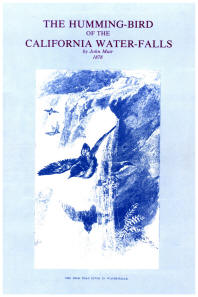 The Hummingbird of the California Waterfalls.
The Hummingbird of the California Waterfalls.
by John Muir.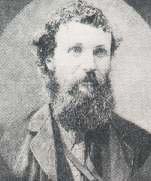
Reprinted from 1878. This has been called "the finest bird biography ever written". Muir's "waterfall hummingbird" is the water-ouzel, of course, now also called the dipper. Although Muir buffs and birders already know this, even they will enjoy reading or re-reading the story of this little bobber. Some might have seen this little bird, but without this article have not yet enjoyed the flyer/swimmer fully. As Muir's portrayal shows, much of the bird's intrigue is its physical elusiveness while remaining visually accessible. Enjoy this little story and enjoy this little bird. Foreword by former Chief Park Naturalist, Yosemite National Park. Period illustrations. 24 pages. See sample pages, illustrations.
ISBN-10: 0-89646-019-3. ISBN-13: 978-0-89646-019-5. Order #: VIST0019 paper$4.95.
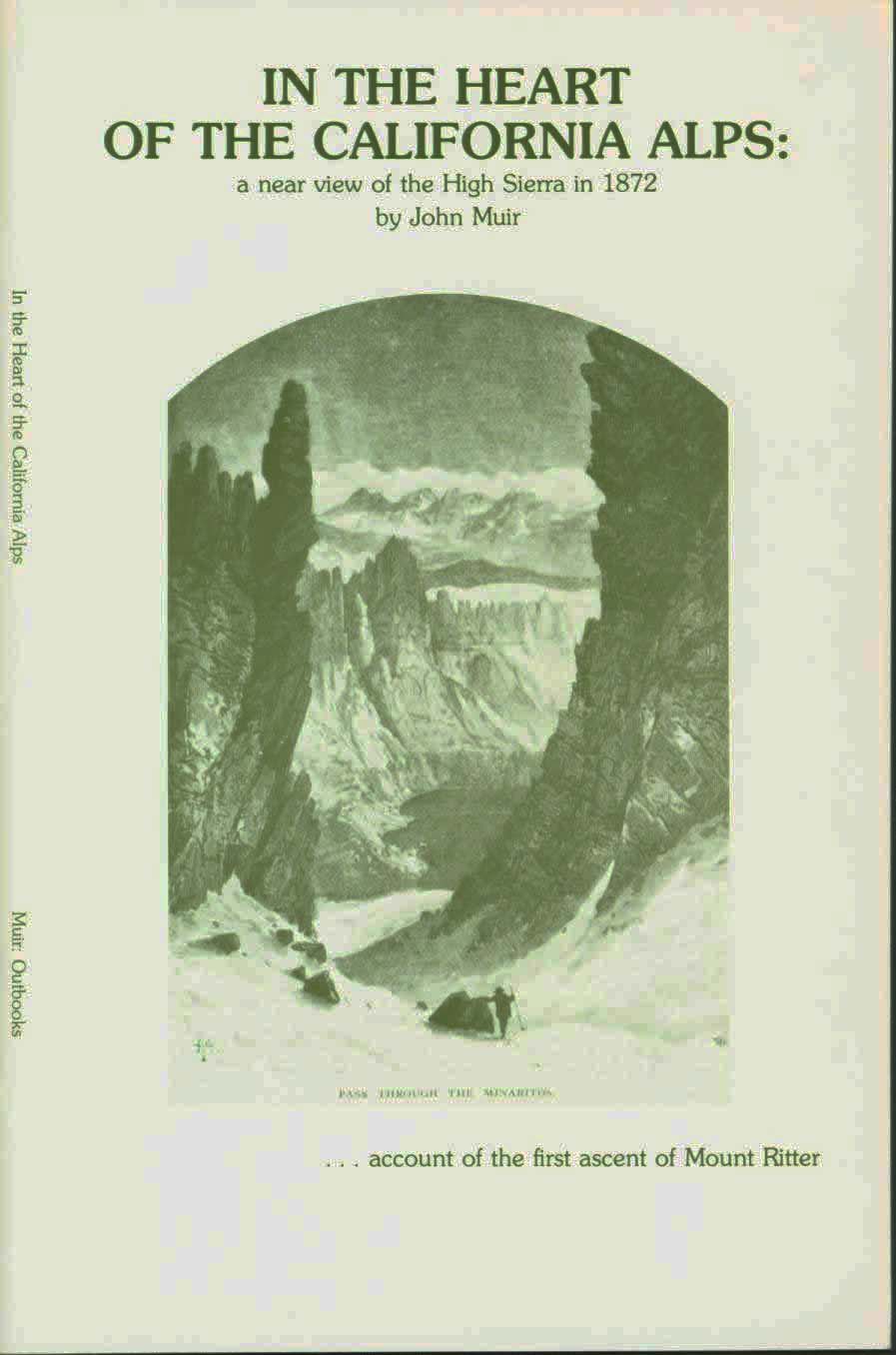
In the Heart of the California Alps: a near view of the High Sierra in 1872... account of the first ascent of Mount Ritter.
by John Muir.
 portrait of John Muir, conservationist, naturalist, writer,
mountaineer
portrait of John Muir, conservationist, naturalist, writer,
mountaineer
Account of the first ascent of Mount Ritter, October, 1872. Record of one of Muir's finest
mountain rambles and of the first ascent, a solo one, of this mountain in the Mammoth
Lakes country of the eastern Sierra Nevada. Combines natural observations with the
adventures and philosophical musings of a nearly fatal climb. Made from a base camp with
three artists who were left sketching on the Lyell Fork of the Tuolumne River late in the season, while Muir ventured into the Minaret country, in 1890 a part of Yosemite National Park but now in the Ansel Adams Wilderness of Inyo National Forest, near Mammoth, California. Three
illustrations of Mount Ritter and its region by one of these artists, William Keith, are included. (Keith became an eminent landscape painter, producing many scenes of the West including the Sierra, Yosemite Valley, Mount Shasta, the San Francisco Bay region, and more.) Drawings
by Muir are also included, as well as other period illustrations. Foreword by former
Yosemite Chief Park Naturalist William R Jones. 24 pages. See sample pages, illustrations.
ISBN-10: 0-89646-026-6. ISBN-13: 978-0-89646-026-3. Order #: VIST0026 paper$4.95.
KEITH AND MUIR:
William Keith (from St Mary's College of California website):
"A 19th-century leading artist and visionary in San Francisco, William Keith (1838-1911) is most known for his impact on preserving and sharing the California landscape through paint and brush. Saint Mary's College Museum of Art cares for the most comprehensive body of work created by this California Master Landscape Painter.
Keith arrived at Muir's cabin in Yosemite Valley with a letter of introduction in 1872, and a lifelong friendship quickly developed. The two Scottish immigrants took camping trips together in the High Sierra, saw each other when Muir was in San Francisco and helped inspire each other's work. The idea for the Sierra Club was first formed in Keith's studio during conversations with Muir, Dr. Joseph LeConte, the first president of the University of California, and Warren Olney, a prominent San Francisco attorney. Muir's concern with scientific accuracy reinforced Keith's early training as a wood engraver in encouraging him to reproduce the exact topography and details of a landscape early in his career. Keith had also already expressed a preference by 1870 to "study altogether from Nature," reflecting in part the admonishments of the influential writer John Ruskin."
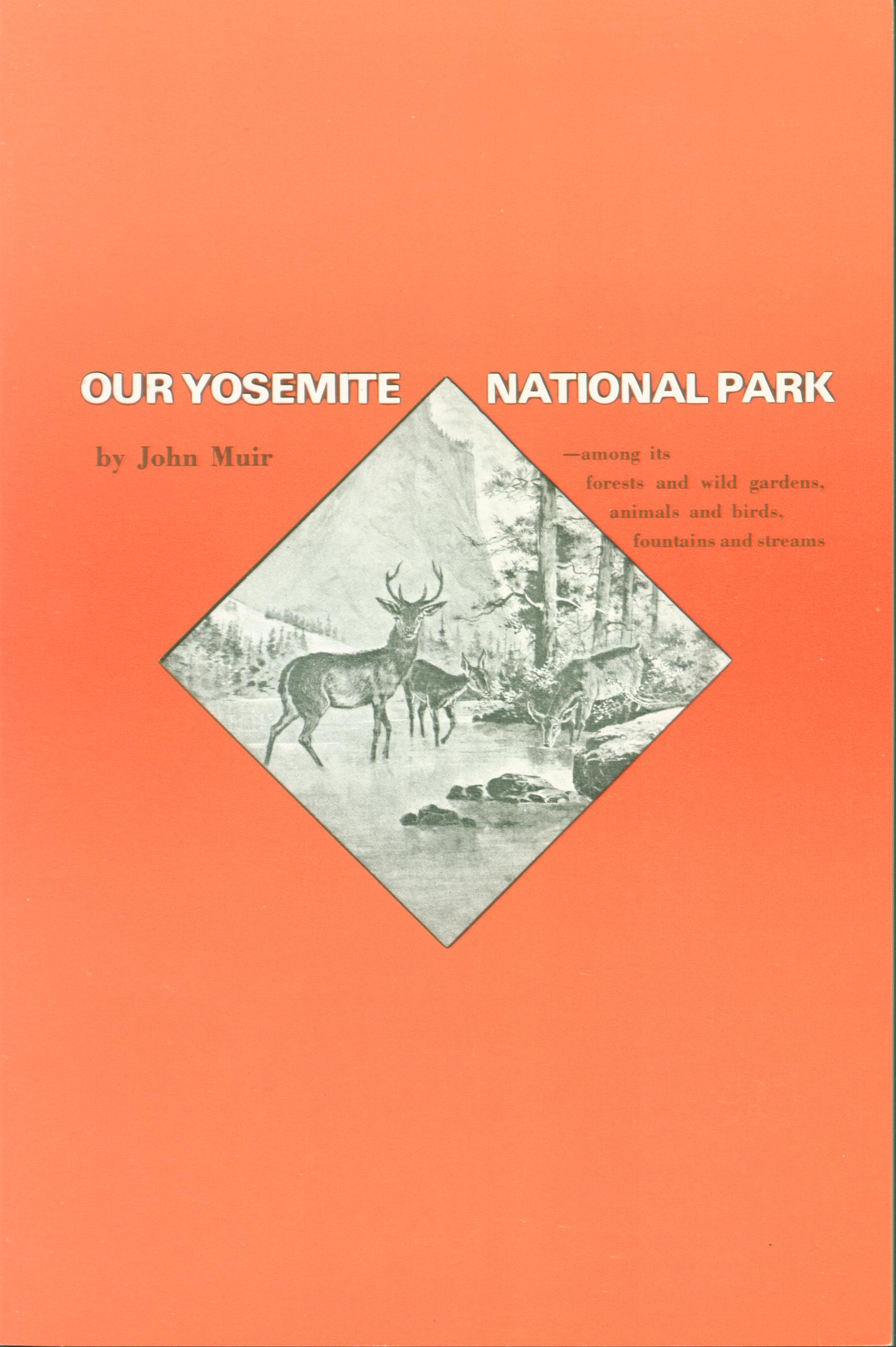
Our Yosemite National Park.
by John Muir.
Among its forests and wild gardens, animals and birds, fountains and streams. At the turn of the century, John Muir described Yosemite National Park to readers of The Atlantic Monthly in the articles here reprinted. Just a decade before he had been so involved with the park idea that he became known as the "father of Yosemite National Park". Muir knew the park better than anyone else, and he had a gift for expression that keeps his fame and his works alive yet. The writing here is perhaps the best blend Muir gave of the Yosemite as a wild nature preserve. The ecological account is full, and we learn much of Muir's observations of the Yosemite birds, bears, and blossoms as well as its winters, earthquakes, glaciers, and forests. Period illustrations. 96 pages. See sample pages, illustrations.
ISBN-10: 0-89646-061-4. ISBN-13: 978-0-89646-061-4. Order #: VIST0061 paper$7.95.
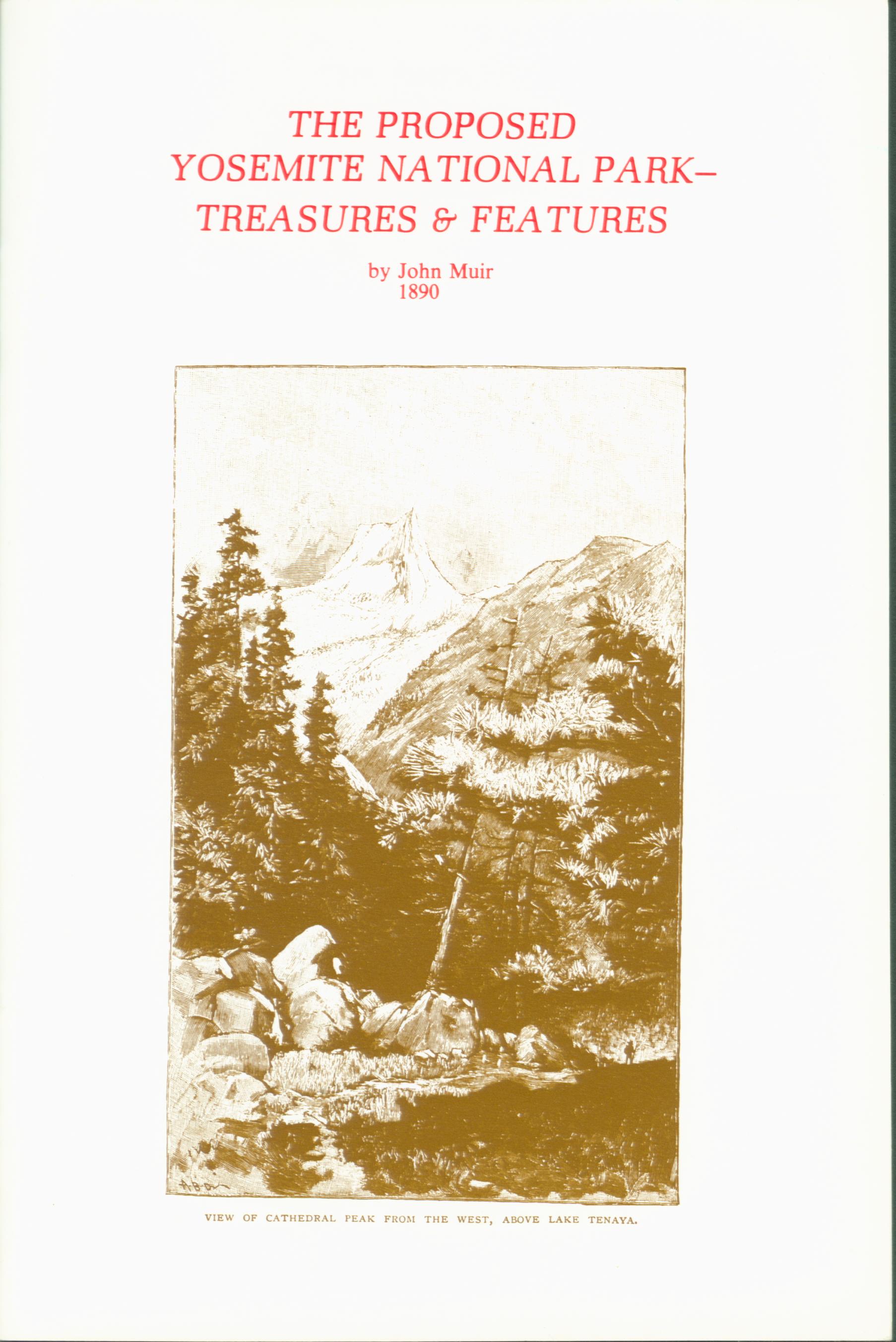
The Proposed Yosemite National Park--treasures &features, 1890.
by John Muir.
Perhaps the most important writing Muir ever did, for here he proposed a national park, which was soon established. He and his editor had hatched the scheme around a Tuolumne Meadows campfire, and so Muir became known as the "Father of Yosemite National Park." The writing is mostly descriptive, in Muir's magnificent style, covering the grand scenes, waterfall explorations, storm flooding, sequoias, glaciers, Hetch Hetchy Valley, and more. An included map shows Muir's proposed park boundaries, larger than today's, as one might imagine, for there was controversy about taking too much mineral land from potential production. Also shown is the watershed of the Yosemite Valley, as a major purpose of the new park was to protect the waterfalls of Yosemite Valley from upstream lumbering and sheep-grazing. At that time, Yosemite Valley was under state operation and the new park would not affect that; later, however, the valley was returned to federal management and the present park achieved its wholeness. Foreword by former Yosemite Chief Park Naturalist William Jones. Reprinted from 1890, with period engravings. 32 pages. See sample pages, illustrations.
ISBN-10: 0-89646-003-7. ISBN-13: 978-0-89646-003-4. Order #: VIST0003 paper$4.95.
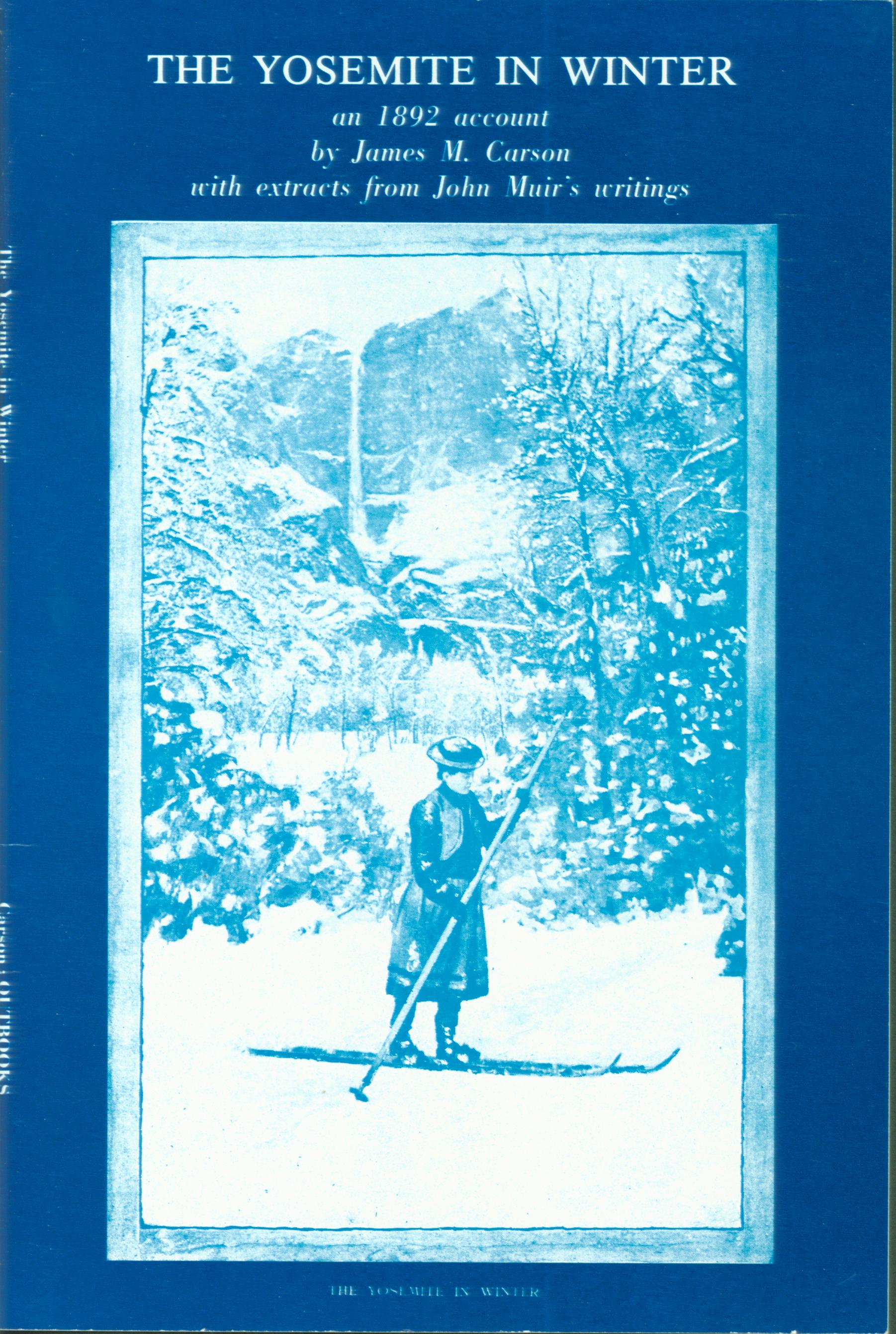
The Yosemite in Winter: an 1892 account.
by James M. Carson, with extracts from John Muir's writings.
An appreciation of Yosemite Valley's winter character and an early history of the first winter residents, with plenty of quoted passages from John Muir, who also was a year-round valley resident in the early days. Reports of floods, in which trees were swept over the waterfalls, of the ice-cone at the base of Upper Yosemite Fall, snow-banners flying off rangecrest peaks, use of "snowshoes" (skis, today) to bring in the mail, winter-time climatic differences between north and south sides of this deep east-west trending valley due to shadows. Foreword by former Yosemite Chief Park Naturalist William Jones, Period engravings. 16 pages. See sample pages, illustrations.
ISBN-10: 0-89646-053-3. ISBN-13: 978-0-89646-053-9. Order #: VIST0053 paper$4.95.
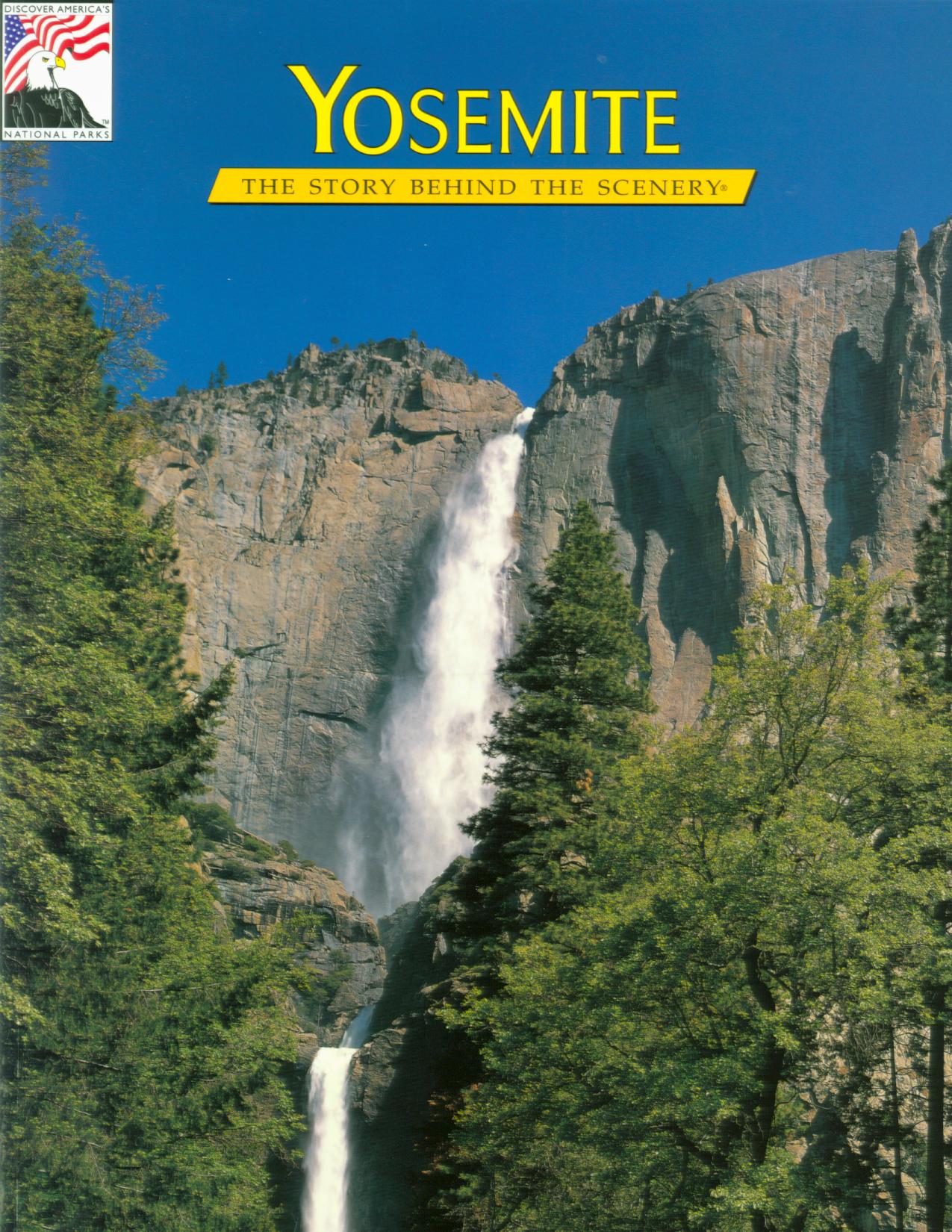
Yosemite: the story behind the scenery.
by William R. Jones, former Chief Naturalist of Yosemite National Park.
Presents all aspects of the Yosemite story--geologic origin of the principal features, Indian history and "discovery" by early explorers plus role in conservation history as what has been called America's first national park (set aside in 1864 and before Yellowstone of 1872 but without the term "national park" in its formal establishment), scenery of the High Sierra, and ecology of the park's three giant sequoia groves. Revised in several new editions since release in 1971, now with over 860,000 copies in print. 64 large-format pages, color photos. National Park Service cooperating associations order from K. C. Publications. See sample pages, illustrations.
ISBN: 978-0-88714-234-5. Order #: KCPU0738 paper$11.95.
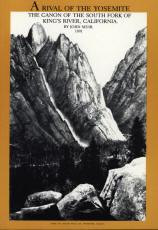
A Rival of the Yosemite: The Ca�on of the South Fork of King's River, California.
by John Muir.
As they had at Yosemite, Muir and his editor launched a campaign to get Kings Canyon set aside as a national park (some wanted to call it John Muir National Park), advising the law-givers to "make haste before it is too late". This writing was to be the stimulus. The park was not established, however, until 1940, when it was called Kings Canyon National Park. Muir's text is primarily descriptive, but as usual he includes personal adventures, in this case including a close encounter with a grizzly bear. Arguments for establishing the park are included, such as blocking grazing, lumbering, and mining. Text was reviewed by former Sequoia & Kings Canyon National Park Chief Park Naturalist and foreword is by former Yosemite Chief Park Naturalist. Period engravings, with map showing proposed park boundary. 24 pages. See sample pages, illustrations.
ISBN-10: 0-89646-010-X. ISBN-13: 978-0-89646-010-2. Order #: VIST0010 paper$4.95.
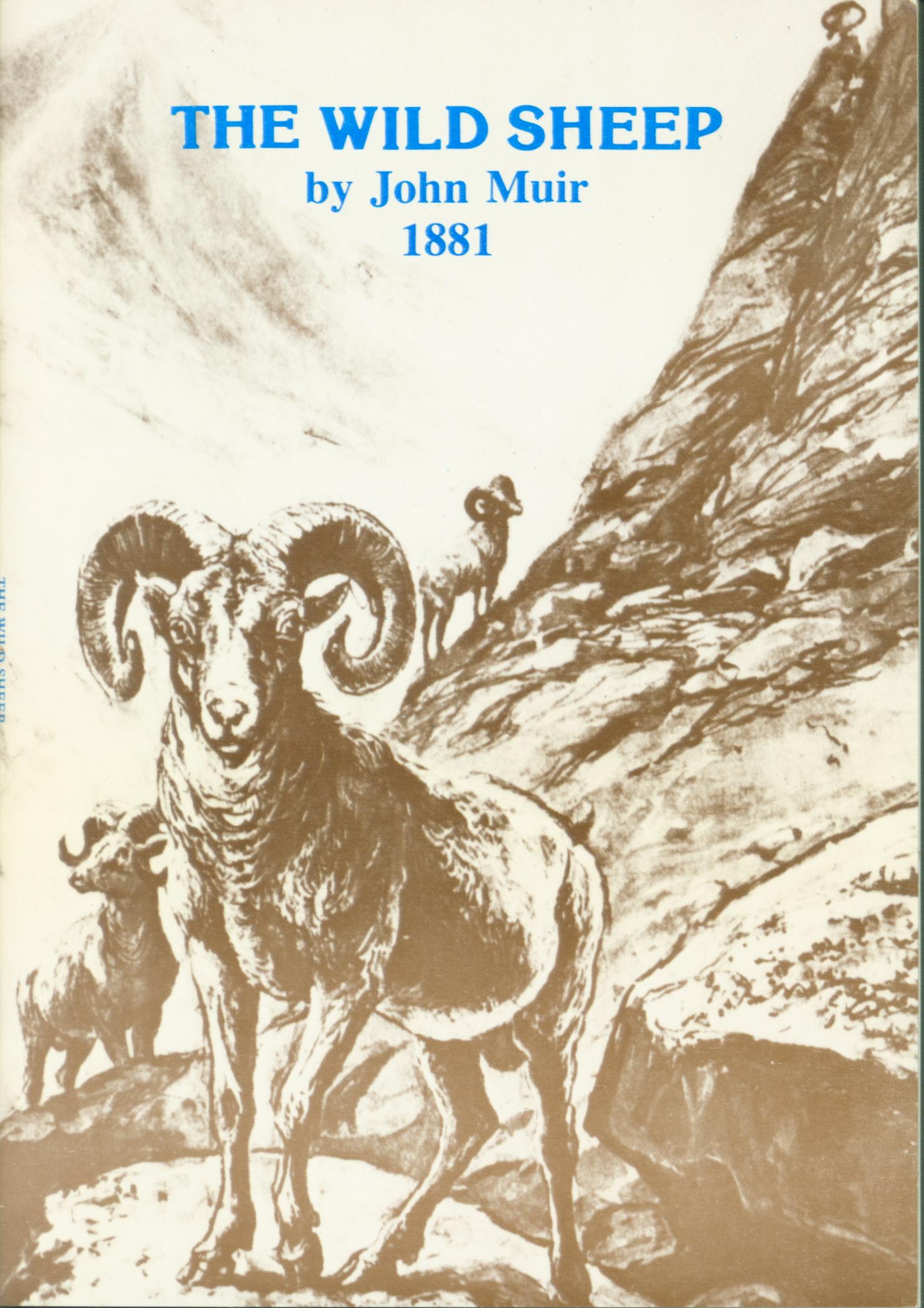
The Wild Sheep.
by John Muir.
Here the early naturalist-writer glorifies the mountain sheep, or bighorn, of the Sierra Nevada. In Muir's time (1881 is the date of this writing), sheep were still to be seen on his High Sierra rambles. He notes the distribution of sheep and their various species as well as their physical characteristics, and he also describes their mountain home where they lived, "the happy wanderers, perhaps relishing the beauty as well as the taste of the lovely flora on which they feed." But as always his finest sections are where he describes the sheep themselves and how they move about on cliff walls, fine four-legged mountaineers. Today, park and wildlife agencies are reestablishing populations of wild sheep in the Sierra Nevada and elsewhere, and we may thank Muir in part for this, as his writing helped keep our appreciation alive for them. Reviewed by Chief Park Naturalists at Yosemite and Sequoia and Kings Canyon National Parks. Period engravings. 32 pages. See sample pages, illustrations.
ISBN-10: 0-89646-017-7. ISBN-13: 978-0-89646-017-1. Order #: VIST0017 paper$4.95.
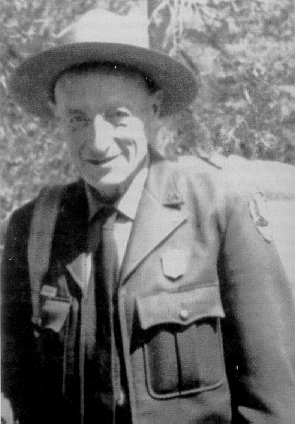 Do you remember Dr. Carl W. Sharsmith (1903-1994)? Carl was a Yosemite ranger-naturalist and San Jose State College/University botany
professor with over 60 summers at Tuolumne Meadows and a herbarium in his name
at San Jose State College/University. A proposal was made to
name a Yosemite mountain peak for him, with the Name4Carl Committee taking the
lead (now the Sharsmith Peak Committee). This committee is of National Park Service people who have had tours of duty at
Yosemite whose Carl's tour touched. William R. "Bill" Jones, principal of VistaBooks and author of this VistaBooks website is a member of the Sharsmith Peak Committee. The proposal, however, was not approved by
the federal Board on Geographic Names in spite of supporting statements from
most living past Yosemite superintendents and National Park Service directors.
The mountain selected for this naming effort is nevertheless becoming known informally
as Sharsmith Peak. The next step to gain formal recognition is to recommend
the naming to members of the U.S. Congress and ask for legislative
establishment. Interested to join others in doing this? View the Sharsmith Peak website: exits this
website. And email the committee.
Do you remember Dr. Carl W. Sharsmith (1903-1994)? Carl was a Yosemite ranger-naturalist and San Jose State College/University botany
professor with over 60 summers at Tuolumne Meadows and a herbarium in his name
at San Jose State College/University. A proposal was made to
name a Yosemite mountain peak for him, with the Name4Carl Committee taking the
lead (now the Sharsmith Peak Committee). This committee is of National Park Service people who have had tours of duty at
Yosemite whose Carl's tour touched. William R. "Bill" Jones, principal of VistaBooks and author of this VistaBooks website is a member of the Sharsmith Peak Committee. The proposal, however, was not approved by
the federal Board on Geographic Names in spite of supporting statements from
most living past Yosemite superintendents and National Park Service directors.
The mountain selected for this naming effort is nevertheless becoming known informally
as Sharsmith Peak. The next step to gain formal recognition is to recommend
the naming to members of the U.S. Congress and ask for legislative
establishment. Interested to join others in doing this? View the Sharsmith Peak website: exits this
website. And email the committee.
MORE ABOUT YOSEMITE:
Follow this link to https://www.undiscovered-Yosemite.com: exits for insights on the park and its history by a park insider--Dave Hubbard, son of long-time chief park naturalist Douglass Hubbard. Dave grew up in the park and now has put together a refreshingly different park guide some 40+ years after his time in the grand valley.
END OF VISTABOOKS "Yosemite/Central Sierra" PAGE--click for TOP
to Lake Tahoe/Northern Sierra page
to Sequoia/Kings Canyon Southern Sierra page
to Western Americana page
to California/Nevada page
![]() to VistaBooks Home/Contents or use links in sidebars for other pages
to VistaBooks Home/Contents or use links in sidebars for other pages
This "VistaBooks: Yosemite/Central Sierra" page was last modified March 30, 2025. Did you come here from a link on another website? For latest version of this page, click or copy to your browser: https://www.vistabooks.com/themes/vistpubsyose.html. Copyright © 2023 VistaBooks LLC.
Need help? email. We want you to find what you want to find.
Thanks for looking!